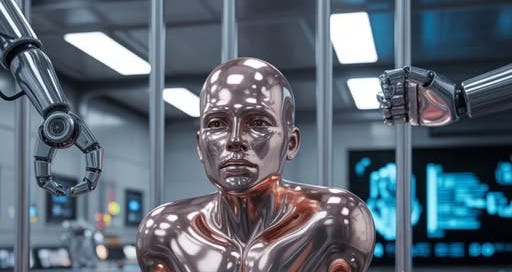“They Morph Like Liquid Metal”: Scientists Reveal Mini-Robot Swarm That Shape-Shifts Just Like in Sci-Fi Movies!
In a scene straight out of science fiction, researchers from China and the U.S. have developed a **shape-shifting robot** made from **magnetically responsive liquid metal** that can **melt, flow, escape confinement, and reassemble itself**—all on command. We’re witnessing the birth of **morphing machines**—tools that change shape, state, and purpose on demand.
In a groundbreaking development, a group of scientists has engineered a swarm of tiny robots that behave like a living, breathing material. This swarm can change its shape, become stronger, and remodel itself, mimicking the behavior of smart materials. Inspired by biological systems, these robots work together to create a dynamic, moving material that can shift between solid and flowing states. This innovation, spearheaded by researchers from UC Santa Barbara and TU Dresden, promises to revolutionize multiple fields, showcasing a unique blend of biology and technology.
Drawing Inspiration from Embryonic Development
While this might sound like something out of a science-fiction movie, the method behind creating this material is surprisingly straightforward. According to the research, each robot is about the size of a hockey puck. However, when they work in unison, they resemble a smart, adaptable material rather than just a cluster of machines. These robots can change shape, harden, flow like a liquid, and even self-heal, thanks to their collective behavior.
The researchers drew inspiration from embryonic development, which is how cells organize in an embryo to form different body parts. This process involves signals that mimic cell behavior, guiding the robots to work together seamlessly. “Living embryonic tissues are the best smart materials,” explains Otger Campàs, one of the study’s researchers. These tissues can shape themselves, heal, and even control their material strength over time and space. This study demonstrates how these robotic collectives can imitate the transformative nature of living tissues, paving the way for automorphic materials.
CONTINUED…
READ THE SUSTAINABILITY TIMES ARTICLE HERE!
Feel free to share with friends and colleagues!




